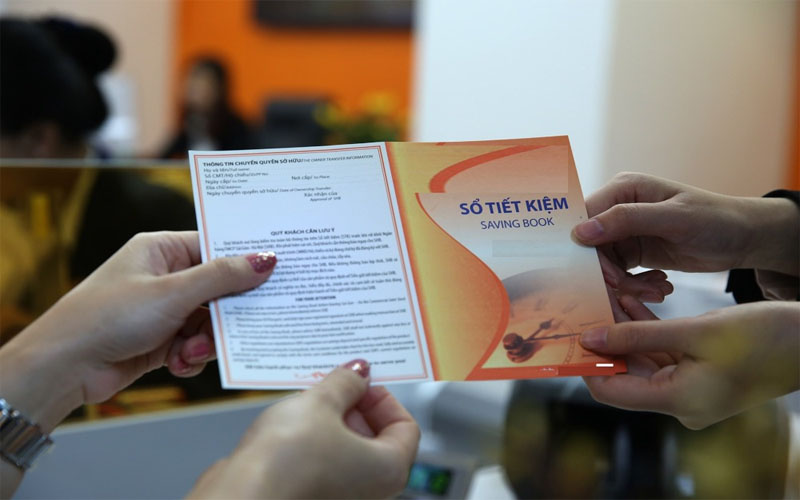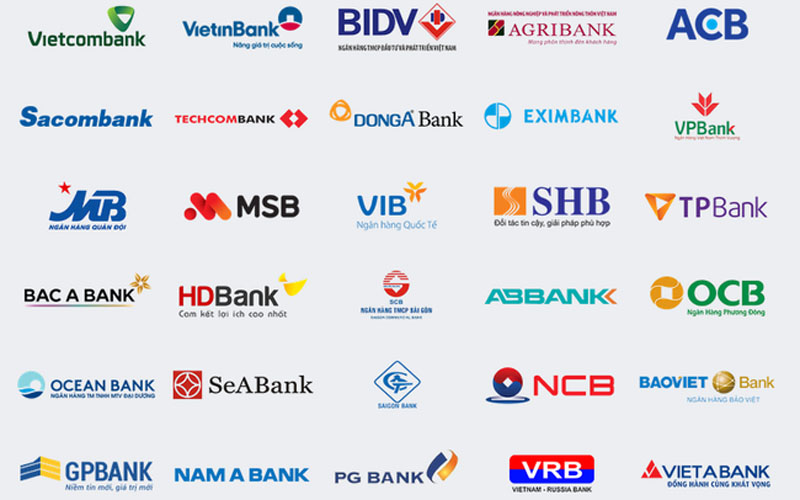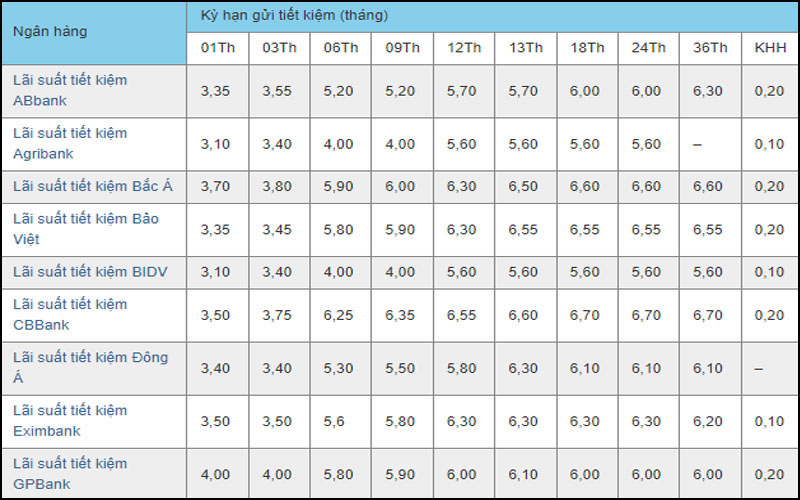In today’s modern life, savings accounts are considered a relatively safe investment for people, especially the elderly. To help people have a more comprehensive view of savings accounts, let’s explore the following article.
1. Understanding Savings Accounts
What is a savings account?
 A savings account is an individual’s passbook for depositing money in a bank
A savings account is an individual’s passbook for depositing money in a bank
A savings account is an individual’s passbook for depositing money in a bank, containing important information such as the account holder’s details, the deposit amount, and the interest rate and term of the deposit.
Instead of keeping your money at home and worrying about risks such as theft, fire, or inflation eroding its value, you can open a savings account at a bank, which offers several benefits over traditional storage methods.
Types of savings accounts available today
Classification by deposit method
Considering the deposit method, there are two types of savings accounts: traditional and online. While essentially the same, they differ in how deposits are made.
Traditional Savings Account
Method: Open directly at the bank’s transaction counter
Requirement: Customers only need to bring their ID card to the bank to open an account
Account opening time: Accounts can only be opened during the bank’s operating hours
Closure of account: The passbook must be presented at the bank for closure
Interest rate: As per the bank’s published savings account interest rate
Online Savings Account
Method: Open online through internet or mobile banking
Requirement: Customers must register for online banking services to use this type of account
Account opening time: Accounts can be opened online at any time
Closure of account: Account can be closed online from the comfort of your home whenever needed
Interest rate: Usually higher than the counter rate.
 There are two types of savings accounts
There are two types of savings accounts
Classification by deposit term
This classification divides accounts into fixed-term and non-term savings accounts.
Fixed-term Savings
Deposit period: Customers must choose a deposit period from the options offered by the bank, which could be weekly, monthly, or yearly
Interest rate: Higher interest rates depending on the chosen term
Withdrawal: Early withdrawal is possible but will result in a loss of the initially agreed-upon interest rate, and only the non-term interest rate will be earned.
Non-term Savings
Deposit period: No specific period is required
Interest rate: Very low interest rate, usually below 1%/year
Withdrawal: Withdrawals can be made at any time
2. Guide to Opening a Savings Account
Opening a savings account directly at the bank
 Procedure for opening a savings account at a bank
Procedure for opening a savings account at a bank
Step 1: Prepare your ID card or other identification documents, along with the cash you wish to deposit at the bank. If you already have money in your bank account, you can request the staff to transfer the amount from your account without bringing cash.
Step 2: Fill out the savings account opening request form provided by the bank staff
Step 3: The bank will verify your information, deposit amount, and term, and then print your passbook.
Step 4: The bank will return your passbook. Keep it safe to avoid any issues later on.
Opening an Online Savings Account
Opening an online savings account involves completing the account opening process remotely without visiting the bank in person. All actions, from opening the account to checking interest rates, making deposits, closing the account, and renewing it, can be performed on electronic devices with an internet connection.
You can access the websites of various banks to open an online savings account. Each bank has its own account opening process and requirements. Stay updated by checking their websites or calling their hotline for assistance.
3. Important Considerations for First-Time Savers
Saving money is a safe investment strategy used by many people. However, not everyone knows how to save effectively to maximize returns and minimize risks. Here are some essential tips to keep in mind when starting your savings journey:
- Consider the savings term carefully
- Understand how savings interest rates are calculated
- Be aware of the maturity date and account closure process
- Think through the implications of early withdrawal
- Learn about compound interest
- Understand online savings accounts
4. Frequently Asked Questions About Savings Accounts
Which bank should I choose for my savings account?
 Which bank should I choose for my savings account?
Which bank should I choose for my savings account?
Most banks today allow customers to open savings accounts. Your task is to select a bank based on criteria such as interest rates, reputation, and flexibility in depositing and withdrawing money.
Interest rates
 Higher interest rates benefit you more
Higher interest rates benefit you more
Interest rates are the most critical factor in choosing a bank for your savings account because they determine your profits. Therefore, it is advisable to research banks offering higher interest rates to maximize your savings returns. Larger, more reputable banks tend to have lower interest rates than smaller ones.
Reputation
The bank’s reputation is another crucial consideration when choosing a savings account. It ensures the safety of your funds in the face of potential upheavals in the banking industry, such as bank failures.
Deposit terms
Selecting a bank with multiple deposit terms gives you more options, ensuring liquidity and eliminating the need for premature withdrawals that could result in forfeited expected interest.
Here is a list of some of the safest banks offering the highest interest rates for your reference
- Vietcombank
- Agribank
- Vietinbank
- BIDV
- Sacombank
- Military Bank (MB)
- DongA Bank
- SCB
- VPBank
- HDBank
How can I maximize my savings returns?
 Online account opening typically offers higher interest rates, approximately 0.2 – 0.3%/year
Online account opening typically offers higher interest rates, approximately 0.2 – 0.3%/year
Pay attention to compound interest
Instead of receiving simple interest each period, the interest from the previous month is added to the principal to calculate the interest for the next period. This method can rapidly increase your returns, so be sure to ask the bank staff about it.
Online savings accounts generally offer higher interest rates
Most banks today maintain both account opening methods: at the counter and online. Online accounts typically offer higher interest rates, approximately 0.2 – 0.3%/year higher than counter accounts. Thus, it is worth considering this option.
Savings account interest rates of some banks
There are two types of savings account interest rates: counter rates and online rates.
The following are the counter rates of some banks for your reference.
 Counter rates of savings accounts at some banks
Counter rates of savings accounts at some banks
Note: These interest rates are for reference only. For accurate information, please refer to the bank’s website or visit a branch for consultation.
Should I choose a fixed-term or non-term savings account?
If you are new to savings accounts, it is advisable to opt for a fixed-term savings account, as it offers higher interest rates. You can choose shorter terms, such as 6 to 12 months. However, if you plan to deposit a sum of money that you do not anticipate needing in the near future, consider a longer term of 12 to 18 months.
The information provided above covers the basics that everyone should know about opening a savings account at a bank. Hopefully, you found it helpful.
Is Techcombank Online Savings Safe? How to Send Online Savings on Mobile Guide
Techcombank’s online savings is a modern alternative to traditional paper-based savings cards or books. With online savings, you can easily and securely manage your savings from the convenience of your phone, without the need to visit a bank. It’s a fast, safe, and efficient way to save without the hassle of physical paperwork or time-consuming trips to the bank.
The Ultimate Guide to Agribank’s Savings Account Deposits
Introducing the ultimate guide to sending savings to Agribank. Uncover the secrets to seamlessly transferring your hard-earned money to one of Vietnam’s leading banks. Discover the efficient and secure methods to grow your financial future with Agribank. This insightful article will navigate you through the process, ensuring your savings journey is a breeze.
































